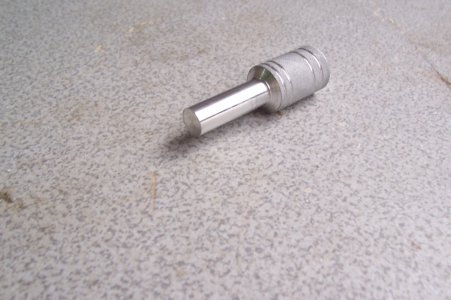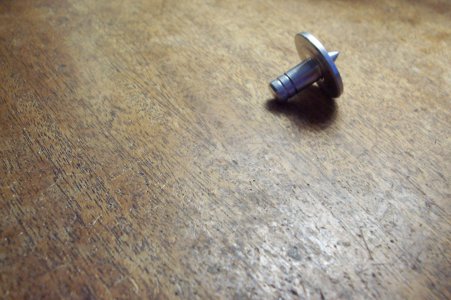I would contribute several points, to wit:
1) M8x1.25 is so close to 5/16-18 that it must be measured with a mic, it can't be seen. Size a drill for a 5/16-18 tap. I tend to drill the next larger letter size than that recommended. It still gives a fairly good grip(50%?) but is less work to tap. As I recollect, recommended tap drill is an "F" (.252ish) drill. I would use "G". . . I'm not up so much on fractional sizes, but tap size for 5/16 coarse is 1/4 inch. M8-1.25 will tap to approximately the same size. 1/4 inch, plus or minus 1/64. . .
2) A "carbon steel" tool will (sorta) work on aluminium, and is good for wood and plastic. For use even in mild, untreated steel, it should be a minimum of "HSS", high speed steel. Really good taps, US made, will give the best results and are well worth the cost. In any event, the tap must be harder than the material being tapped. How much harder determines how long the tap will last. Carbon steel, about three thread pitches.
3) Even a bottoming tap needs some chip clearance in the bottom of a blind hole. The depth of a drilled hole is reduced by the pointed end of the drill. The hole must be drilled deeper than the desired finished tapped area. How much is a personal judgement dependent on the person drilling the hole, but it must be at least 1/8 inch deeper for a 5/16 fastener. Starting with a plug tap to bottoming and swapping to a finishing tap is the preferred method. If there is room, drill the hole deeper and let the plug tap run enough to get what is needed.
4) Having the tap perfectly square to the hole is a given, but must be mentioned. When a tap starts a little off true square, it will drift itself into the side wall of the hole and jam. Sort of like cross threading. . .
There are other factors that need covering, but my mind is drifting so I cannot convey the concepts properly. These are starting points.
.


